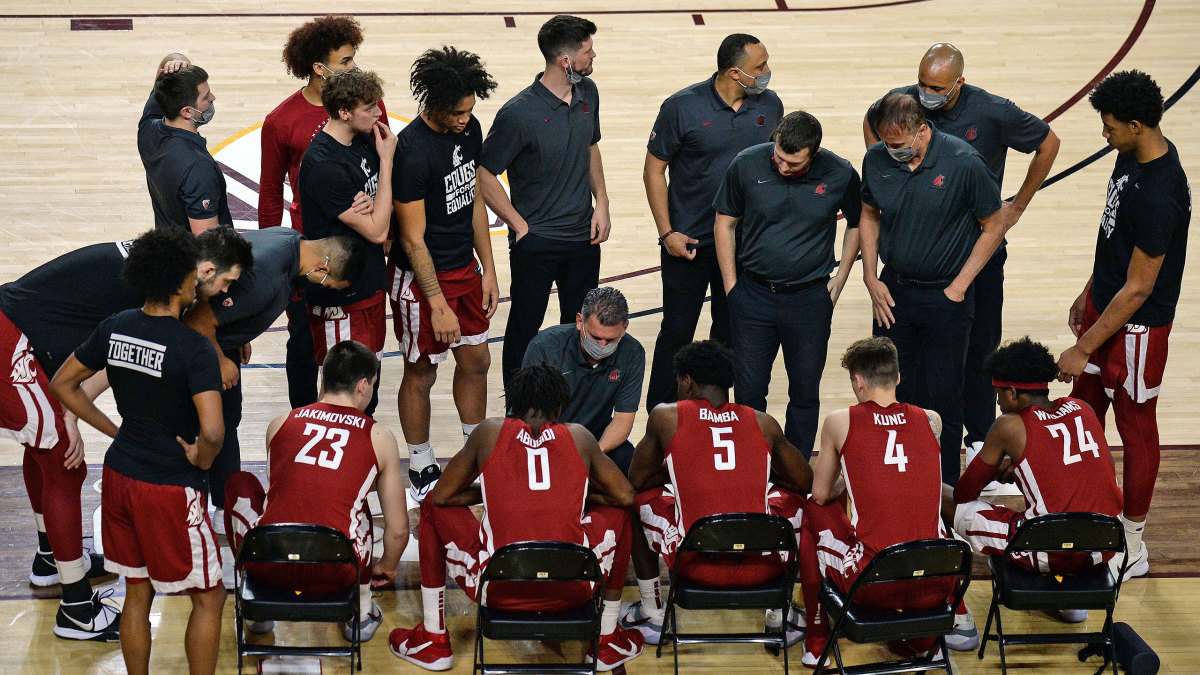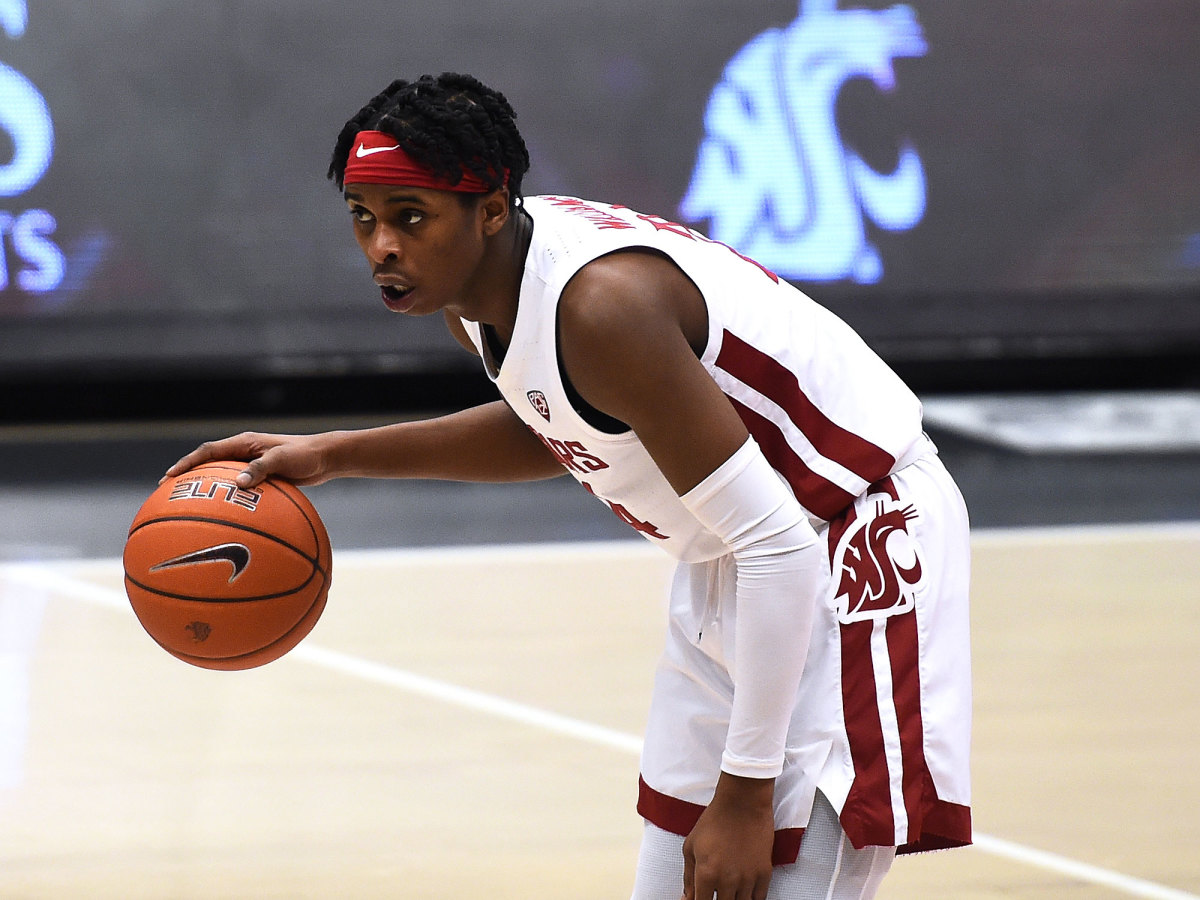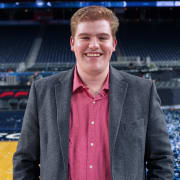Can ‘Moneyball’ Work in College Hoops? Under Kyle Smith, Washington State Is the Ultimate Test

Washington State’s 1,700-acre campus sits in the midst of the rolling hills of eastern Washington, surrounded by wheat fields on every side. Pullman’s airport is serviced by one airline, and only flies to and from Seattle.
Wazzu junior guard Noah Williams confirms what appears obvious based only on a cursory Google Earth search: “There’s literally nothing to do in Pullman.”
With the exception of two magical years under Tony Bennett, the men’s basketball program has rarely made winters exciting in the rural college town. Washington State has made the men’s NCAA tournament just six times in program history, most recently in 2008. In the KenPom era (since 1997), WSU has finished worse than 200th on the analytics site as many times (three) as it has finished in the top 50. Before coach Kyle Smith’s arrival from San Francisco in 2019, the program hadn’t finished in the top half of KenPom’s 350-plus team rankings nationally in six years, by far the longest streak among high-major teams.
In addition, Washington State has the smallest men’s basketball budget among “Power 6” (Power 5 plus Big East) teams, per a 2020 analysis by Three Man Weave. The season before Smith arrived in Pullman, Wazzu averaged under 2,500 fans per game, by far the lowest among the “Power 6.”
All of this is to say that Washington State isn’t supposed to be good at men’s basketball. It’s widely considered by many in the industry to be the hardest high-major job in the country. And while the Cougars are still far from where Smith hopes they’ll be one day, it’s hard not to laud the improvement in a relatively short period of time. In Year 1 under the 52-year-old, WSU jumped 80 spots in KenPom and won five more games than it did in the season before, finishing .500 for the first time in seven years. And despite the early pro departure of star wing CJ Elleby, now a Portland Trail Blazer, the Cougars jumped up another 49 spots in 2020–21, to No. 78. It was Wazzu’s best KenPom finish in a decade.
Watch NCAA basketball games online all season long with fuboTV: Start with a 7-day free trial!
Now, the Cougars enter 2021–22 with something relatively foreign to the program: expectations. A young core that features Williams, Nigerian big man Efe Abogidi and talented young forward Dishon Jackson returns, and a touted group of newcomers headlined by four-star recruit Mouhamed Gueye and top transfer guard Michael Flowers join the fray. The WSU roster is in better shape after two years with Smith than anyone could have anticipated—even Smith says they’ve “outkicked [their] coverage” in recruiting. How? It all ties back to a Moneyball-style approach honed through rebuilds he has engineered across the country.

Kyle Smith has never met Michael Lewis, but he’s “dying to” and wants to give him a message: “I built a career on Moneyball.”
Moneyball, a nonfiction book written by Lewis in 2003, detailed how the Oakland Athletics’ front office found undervalued baseball players using analytics to overcome a small payroll. The book, later made into a movie in ’11, opened the sports world’s eyes to the power of analytics.
Around the same time the A’s started making waves with their analytically minded approach, another team in the San Francisco Bay Area was beginning to employ similar strategies. Smith had headed to Saint Mary’s College in Moraga, Calif., as an assistant under Randy Bennett. When Smith and Bennett arrived in 2001, Saint Mary’s was coming off a 2–27 season and sitting in the same conference as Gonzaga, which was becoming a perennial top-25 team.
Before Moneyball brought analytics ideas into the mainstream of sports, Smith didn’t exactly know how to describe what he was doing to try to give Saint Mary’s an edge. He just knew he had to recruit players who didn’t always look the part of a high-level college basketball player.
Perhaps no player illustrated that more than Omar Samhan, who Smith successfully recruited to the Gaels. Samhan was 6' 11" but weighed 315 pounds and had skinny legs.
“He looked like Fred Flintstone,” Smith quips.
While Samhan’s build might have scared off bigger programs, Smith and Saint Mary’s saw him for his skill level. The big man delivered, amassing more than 1,800 points and 1,100 rebounds in his storied career. Saint Mary’s also took off in Samhan’s four years in Moraga, reaching the Sweet 16 his senior season and winning 25 or more games in each of his final three seasons.
Digging deep for under-the-radar stars became a habit for Smith when he got the chance to run his first program, taking over in 2010 at Columbia. That meant recruiting globally—everywhere from New York to California to Canada and even Germany. It’s also where he met John Andrzejek, who helped bring Smith’s Moneyball-like approach to the next level.
Andrzejek, who Smith calls “a human cheat code,” began developing a recruiting algorithm while on staff at Columbia that attempts to project how good a player will be in college based on high school, grassroots and international stats. The algorithm was eventually tweaked and perfected by a professor at the University of San Francisco when Smith and Andrzejek worked there (Andrzejek remains an assistant of Smith’s in Pullman).
One player the algorithm helped uncover was Jamaree Bouyea, whom Smith recruited as the head coach of the Dons. Bouyea was ready to commit to Division II Fresno Pacific before Smith and staff decided to offer him. Last season, he averaged 17 points and almost four assists per game as a senior at San Francisco and has earned NBA looks.
And while WSU assistant Derrick Phelps, who has also coached with Smith at Columbia and USF, concedes that recruiting under-the-radar players like Bouyea isn’t an exact science, he believes the analytical recruiting approach gives Smith’s teams an advantage.
“I think we have a higher percentage of hitting great with those types of kids,” Phelps says.

All three head coaching jobs Smith has had involved significant hurdles to cross in recruiting. Columbia required the global approach and academic roadblocks to find guys that fit at an Ivy League school. At San Francisco, being in the same league as Gonzaga made the talent requirement to compete for league titles far higher than is reasonably attainable at a place like USF. And beyond the budgetary limitations and lack of historical success, Washington State’s location makes it incredibly hard for interested recruits to even visit campus.
“If the [official] visits were 10 days, we’d get every [recruit]. They love being here,” Smith says. “Unfortunately, they’re 48 hours, and [it takes] 12 hours to get here from some places. They come here and they are already staggering like, ‘Where am I?’ and I’m like, ‘You’re in the middle of wheatfields, bro.’ ”
These challenges have necessitated the unique approach.
“It’s how we’ve made our living, the Moneyball thing,” Smith says. “Even at this level, we’re recruiting guys that aren’t getting that many offers, which is amazing.”
A look at the young nucleus of this WSU roster shows plenty of early success stories. Williams, the No. 305–player in his class, was committed to Buffalo until a coaching change, then landed at Washington State shortly after Smith took the job. He has since blossomed into one of the Pac-12’s best players.
Abogidi is from Nigeria and dealt with a knee injury that nearly ended his career in high school. Jackson was a three-star recruit who signed in the late period after interest waned later in his high school career. The 2021–22 roster features players from Australia, North Macedonia, Nigeria, Senegal, Canada and the Dominican Republic, plus New York and Georgia. No stone has been left unturned in finding talent.
But the program’s growth under Smith hasn’t just been driven by crunching numbers from a spreadsheet. Phelps says the hustle stats that are a core tenet of Smith’s on-court philosophy are not too different from how Dean Smith, whom Phelps played for at North Carolina, approached the game. And anyone you talk to from the WSU program will quickly mention the four pillars of Kyle Smith’s programs: Faith, Family, Team and Academics. Analytics don’t define Washington State under Smith; they just give his team an edge to help narrow the gap.
“I’m definitely a people person,” Smith says. “We’re going down to the Snake River today to wrap up our summer; we’re going to have some fun in the water and a barbeque. Those pieces are as important as any two-point field goal percentage or any of that stuff.”

When he was the head coach at Columbia, Smith liked to ask recruits and their parents one simple question:
“Do you think you can play in the NBA?”
There was only one correct answer in Smith’s eyes: Yes. If a player or his parents said no or deflected to talk about an Ivy League education, Smith mentally eliminated them.
“I’ll always ask, ‘How many people thought Jeremy Lin was a pro?’ and they’ll say, ‘None.’ Wrong. One. Jeremy Lin did,” Smith says.
Kyle Smith may have been the only person who believed he could turn Washington State men’s basketball around when he took over. Through two years in Pullman, he has converted plenty of believers. And with a roster that now has the talent to measure up with the Pac-12’s best, Year 3 for Smith could remove all doubt that Moneyball can work at college basketball’s highest level.
More College Basketball Coverage:
• Jalen Duren Is College Basketball's First Big NIL Win
• The Top Players Back for a Bonus College Hoops Season
• Updated Summer Top 25 Rankings
Sports Illustrated may receive compensation for some links to products and services on this website.
